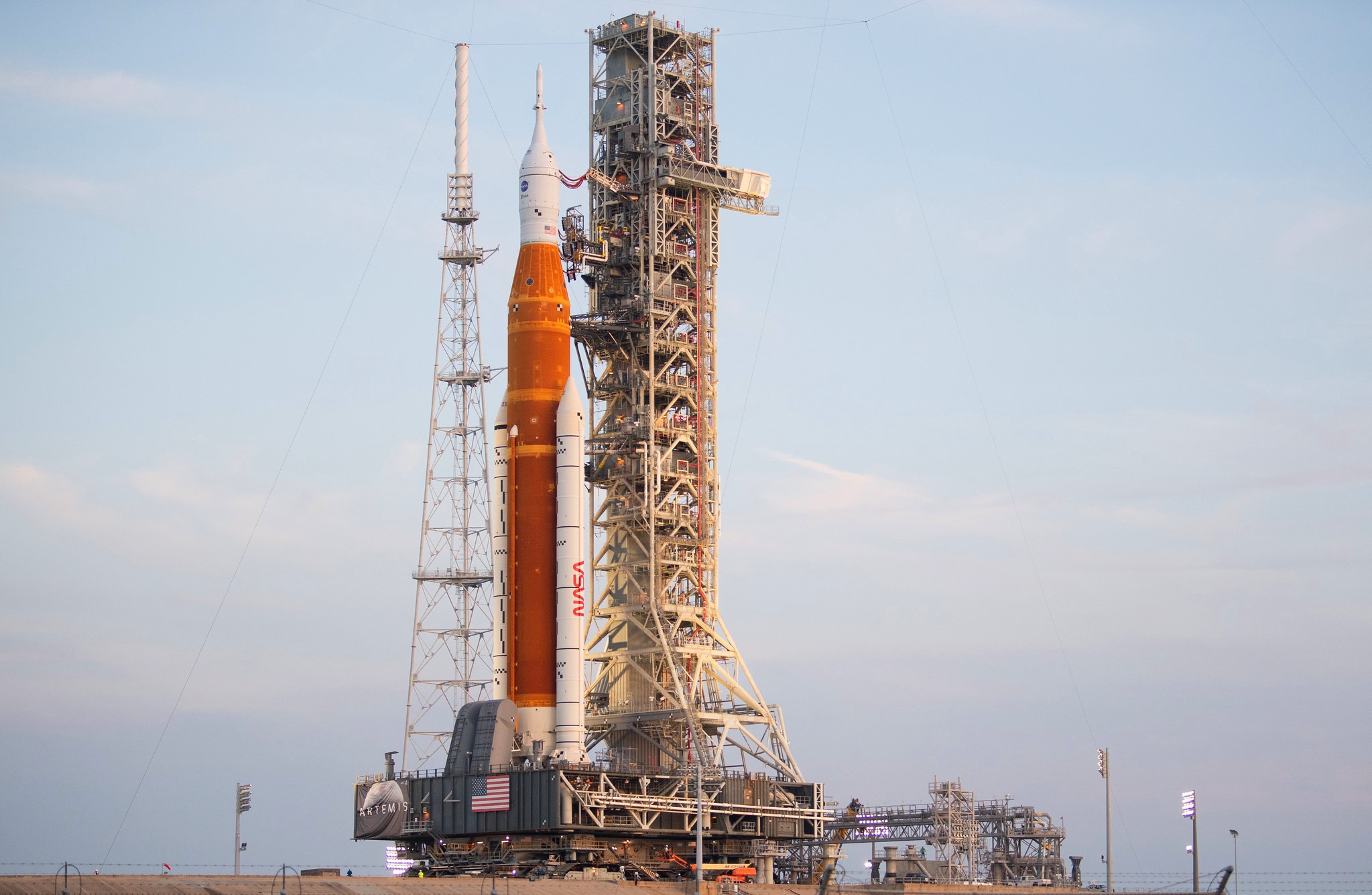The massive SLS rocket has shown that it is efficient. On November 16, she successfully launched the Orion spacecraft, which is heading to the Moon. On the other hand, the SLS cannot be repurposed like a SpaceX Falcon 9.
SLS finally launched yesterday. The Space Launch System (SLS) rocket made its first launch on November 16, 2022, after being delayed for several months. In the decade beginning in 2020, humans will return to the Moon using this rocket.
However, the rocket that just left Earth won’t be able to transport humans to Moon because it’s not reusable like a SpaceX Falcon 9 rocket.
One of the SLS’s distinguishing features is that it was not built using the same blueprint as SpaceX launch vehicles with a reusable first stage (a feature that can also be found elsewhere, such as the New Glenn launcher from Blue Origin).
This implies that every SLS, like Ariane, is a single-use system. This is how the bulk of rockets operate worldwide.
This graphic from the European Space Agency, which was released on November 15, highlights this lack of recovery. It can be observed that two minutes after launch, the two lateral thrusters are expelled, and eight minutes later, the main stage.
Nothing about the potential of getting them back is ever addressed; the second level is no different.
The same was said by the US space agency: “Once they have used their fuel […] the boosters are jettisoned, lowering the mass for the remainder of the journey.” The main stage lands in the Pacific Ocean between Hawaii and California, while the boosters fall back into the Atlantic Ocean 225 km off the coast of Florida, according to NASA.
This naturally stands out given the success SpaceX has had with its recovery strategy.
Considering that the Falcon 9 is operated by an American firm, the main stage automatically returns to Earth and is repeatedly refueled.
Equally applicable to the Falcon Heavy and its two side boosters (which are actually parts of Falcon 9 launchers). SpaceX can chain the launches and save expenses since a rocket does not need to be completely rebuilt.
All fuel must be used for sending to the Moon
On its official website, NASA provided an answer to this query: Including such a capability would naturally involve saving some fuel (or adding some) to assure the main stage’s controlled return to Earth.
But the SLS makes the most of its power to increase the amount of cargo it can transport to the Moon.
The SLS would become heavier overall if fuel were added. Similarly, if a propulsion system cut was required for this sort of mission.
If one wishes to ensure that the stage is appropriately positioned with the vertical one, one would also be required to maybe envision a foot of landing. Once again, this adds weight and intricacy (and risk of failure).
There should be consideration of still another factor. It’s one thing to evaluate NASA’s decisions for the SLS today in light of SpaceX’s achievements.
Situating oneself in the era of the officialization of the American mega-rocket program is a completely different experience. Additionally, SpaceX has not yet shown the applicability of this strategy.
After the Saturn V rocket from the era of the Apollo missions, the SLS project was officially launched in September 2011. (it too was not reusable). Without a doubt, SpaceX already existed at the time.
It had successfully launched and orbited cargo with a number of its rockets. The Falcon 9’s center stage could not be retrieved for the first time until April 2014.
The SLS design has developed concurrently over the last two and a half years, which has steadily frozen his ultimate design. The enterprise has already spent a significant amount of money.
For SpaceX, it still took a few years to get to the point where this recovery was a standard procedure. The SLS was then almost finished.
Who could have predicted the magnitude of the disruption that the age of reusable rockets would bring to the space industry at the beginning of 2010? Players in “New Space,” such as SpaceX and Blue Origin, without a doubt.
But among the organizations already in existence, it was clear that this topic was not yet as important and evident.
Had it been determined that the inclusion of such a capacity would be beneficial to the Artemis program, would it have been able to reroute the construction of the SLS along the way? Due to the fact that it was not originally conceived for this purpose, it carried the danger of beginning from scratch. The pill would have been hard to take with a rocket that has already cost close to $27.5 billion, increasing the budget overruns.
Even if just to undertake a test campaign to confirm the recovery of the SLS first stage, these design modifications would have undoubtedly further delayed the launch of the Artemis mission, in addition to financing concerns.
It exposes one to postponing the astronauts’ return to the Moon for a few years. And, therefore, the initiation of a Mars expedition. Is it realistic given that China is also making progress and has high goals in this field?
Source: California18

